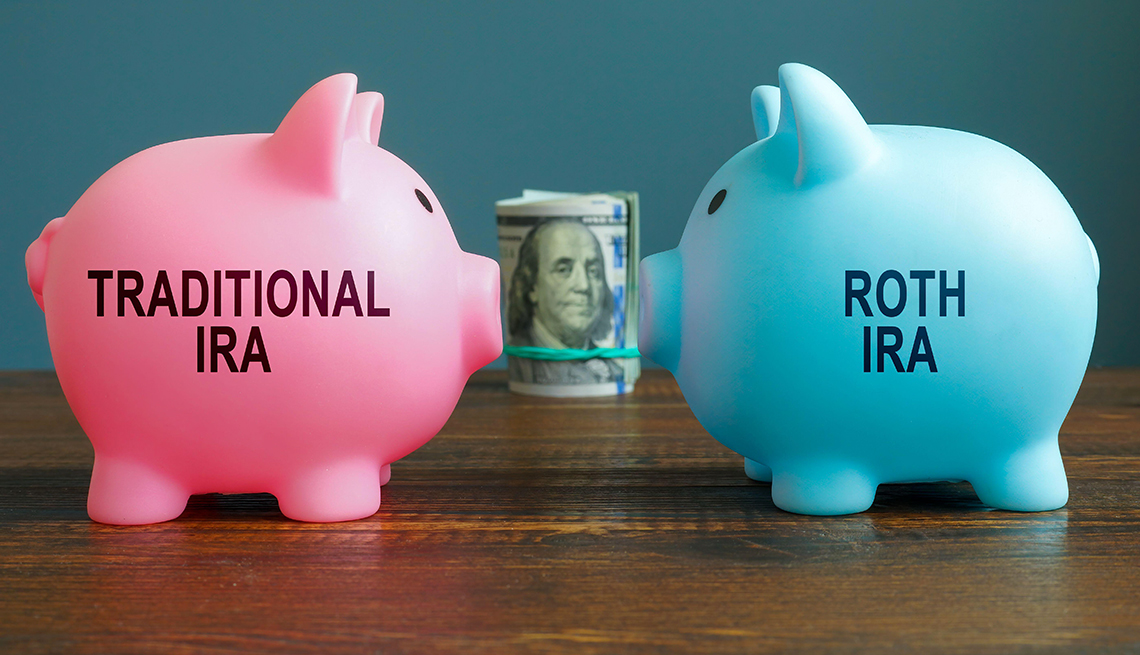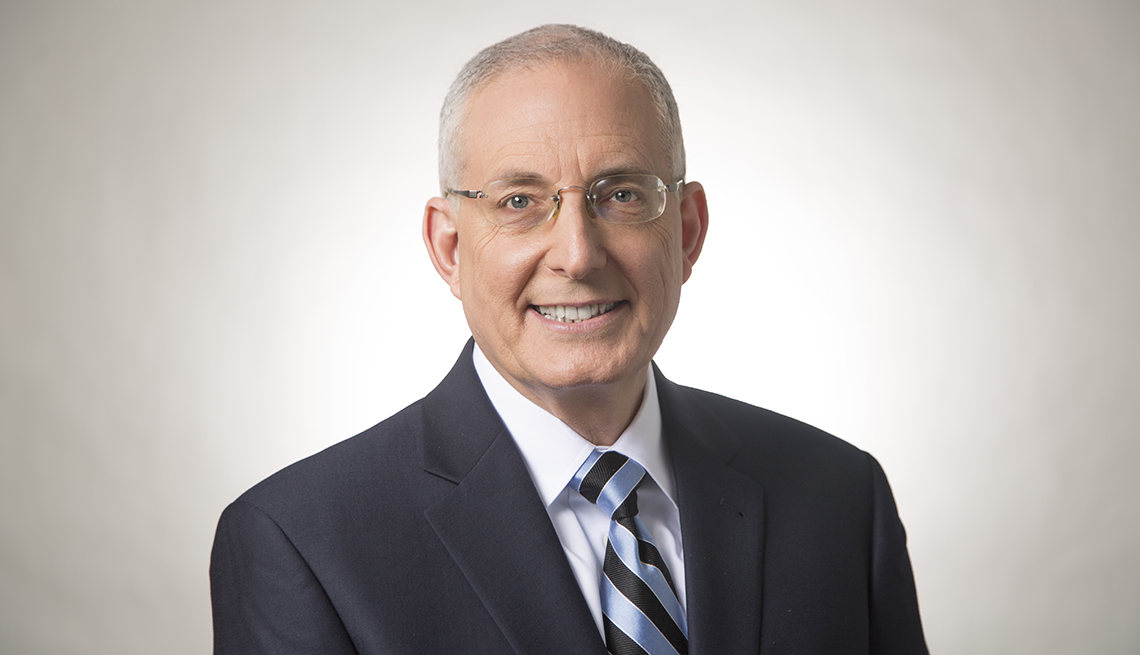Take Withdrawals From Your Traditional IRA First
Give your Roth IRA as much time as possible to grow tax-free
Q: Should I take withdrawals from my traditional IRA first, or my Roth IRA?
Ask Ed Slott
Confused about IRAs, 401(k)s, Roths, taxes and more related to saving for retirement? Ed has the answers. Email your questions to IRAHelp@aarp.org.
Answer:
Once you reach age 72, there is no choice. You must begin taking required minimum distributions (RMDs) from your traditional IRAs. Roth IRAs are not subject to RMDs during your lifetime. Then, if you need more income, you are generally better off taking from your traditional IRA first and leaving your Roth IRA funds to grow. Roth IRAs grow tax-free, so you want to give them the most time to keep growing. Tax-free money grows the fastest, since it does not get eroded by taxes.
If you are not yet subject to RMDs, you would likely be better off increasing your Roth IRA funds by converting all or part of your traditional IRAs to Roth IRAs, if you can afford to. Today’s tax rates are low. If tax rates rise in the future, you will better position yourself tax-wise down the road by increasing your tax-free Roth funds and decreasing your taxable traditional IRA balances. You’ll reduce future RMDs and the tax bills on them.
One exception: If you need more than your RMD amount for living expenses but you are worried that taking too much from your IRA would tip you over into a higher tax bracket or trigger other income-related charges like Medicare surcharges for Parts B and D, it could pay to turn off withdrawals from taxable traditional IRAs and fill the rest of your yearly income needs with tax-free withdrawals from your Roth funds. Nevertheless, you want to try and do all you can to keep your Roth funds growing tax-free as long as possible. Those are your most valuable future income sources because they are also a hedge against the risk of future higher tax rates, which could leave you with less when you need the funds most — in retirement.
Q: Is there an IRS RMD form to include with my 2021 tax return? If there isn’t an RMD form, how does one report the RMD taken?
Answer:
No, there is no line or tax form that explicitly shows you are taking your RMD. You simply report the amount of your RMD as you would any distribution from your IRA or company retirement plan. Generally, these distributions are reported on Form 1040-SR, on lines 4a and 4b for IRA distributions and on lines 5a and 5b for distributions from company plans
So obviously, the next question is, “How will the IRS know if you are taking your RMD?”
The IRS will know you are subject to IRA RMDs, since the bank, fund company or other financial institution that holds your IRA funds will report to the IRS on Form 5498 (IRA Contribution Information) that you are to subject to an RMD for the year. There is no such reporting to the IRS for RMDs from your company retirement plan.
Remember, too, that any part of your annual RMD not taken is subject to a draconian 50 percent penalty. However, the IRS will generally waive that penalty for reasonable cause, like medical issues, a death in the family, financial adviser error or other similar problems.
That said, it is your responsibility to calculate your yearly RMD amount, although for your IRA RMDs, the bank, fund company or other financial institution holding your IRA funds will notify you of this and even calculate the RMD for you if you ask them to. But I would not rely on that. First, their calculation may not be correct (you are still responsible for withdrawing the correct RMD amount). Also, you may have other IRA funds you withdrew from that can be part of your overall RMD from all your IRAs.
It’s best to calculate the amount on your own or with the help of a financial or tax adviser who will know the total balances in all your IRAs (including any SEP or SIMPLE IRAs, if you have them). Plus, you might also have funds in a company retirement plan, like a 401(k), that are subject to RMDs. The financial institutions that hold your IRA funds will not provide RMD amounts from your company plans. They do not have access to that information.
It’s up to you to know the amount of the total RMDs that must be taken from your IRAs or other company plans, and it’s up to you to withdraw the right amount. The amount you withdraw will simply be reported on your tax return as a normal distribution, but not specifically referenced anywhere on the tax forms as satisfying your yearly RMD.
AARP Membership -Join AARP for just $12 for your first year when you enroll in automatic renewal
Join today and save 25% off the standard annual rate. Get instant access to discounts, programs, services, and the information you need to benefit every area of your life.
Q: I am a retired state of Nevada employee and plan to roll over part of my deferred compensation 457(b) plan amount to my designated Roth account. Basically it will be a Roth in-plan conversion. While preparing my taxes for 2021, I will have to report this conversion on my 1040 form. But I am not sure where I need to report it. I would appreciate it if you could please provide me with any guidance.
Answer:
This is known as an “in-plan Roth conversion,” since the funds in your employer plan never move out of the 457(b) plan but instead move within the plan directly from the tax-deferred side to the Roth 457(b) side. This is a Roth conversion and is taxable. You should receive Form 1099-R early next year showing the transfer within the plan. The transfer will likely be coded “G” as a “direct rollover,” but this is a taxable Roth conversion.
You would report this in-plan Roth conversion on your tax return, Form 1040 (or Form 1040-SR), lines 5a and 5b, as a normal distribution from your 457(b) plan. It does not get separately identified as an “in-plan Roth conversion.”
Ed Slott, CPA, is one of the nation's top experts on retirement plans. For more than 30 years, he has educated both consumers and financial advisors on retirement tax-saving strategies. His most recent book is The New Retirement Savings Time Bomb (Penguin Random House, 2021). Visit www.IRAHelp.com to learn more.



